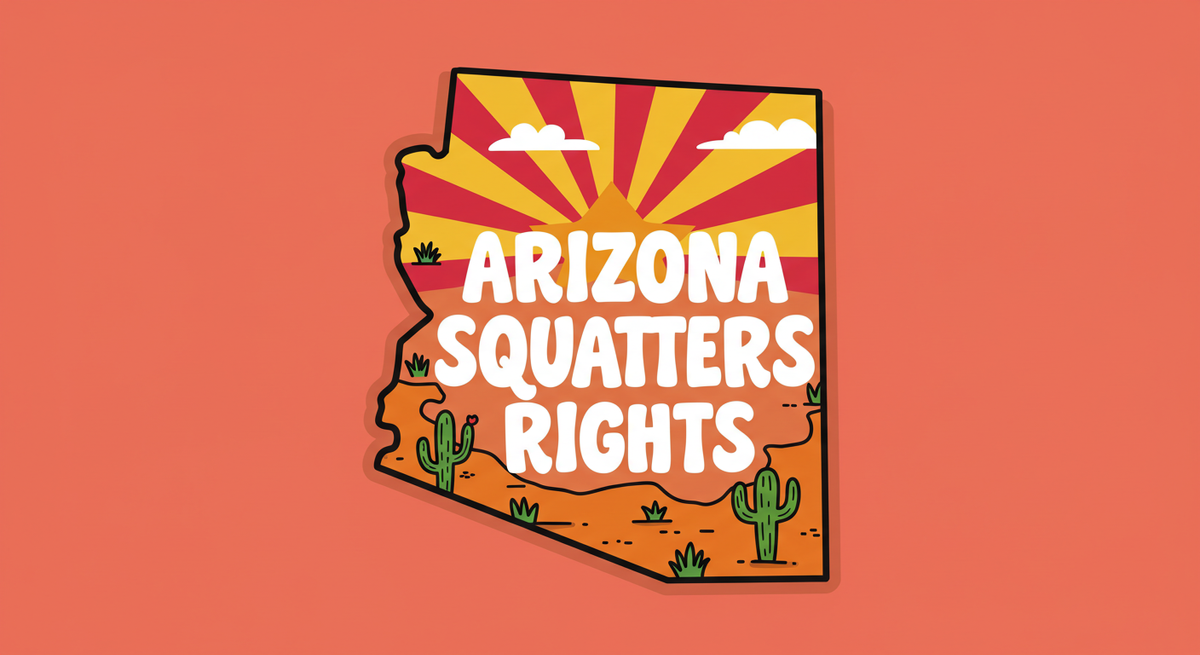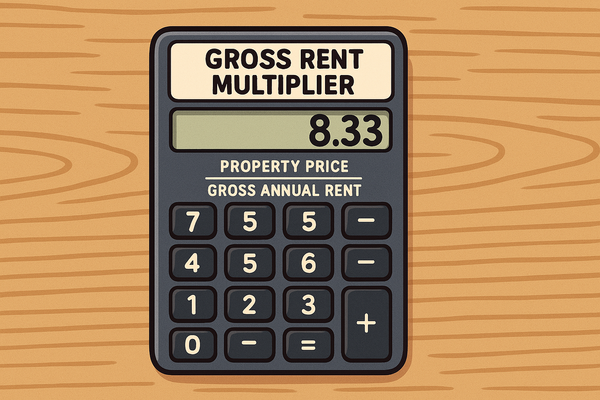Arizona Squatter's Rights Guide: 2025 Laws, Legislative Developments, and Property Protection
The 2-year pathway represents one of the shortest adverse possession timeframes in the United States, creating significant risk for property owners who do not regularly monitor their investments.

Arizona's approach to squatter's rights presents unique challenges for property owners, with some of the most accelerated adverse possession timeframes in the nation. For landlords and property investors in Arizona, understanding Arizona's squatter rights laws is incredibly important to protect your investment and prevent potential loss of property (you may also want to start petitioning to change your states laws on adverse possession).
Key Takeaways
- Arizona has four pathways to adverse possession, with timeframes as short as 2 years
- Recent legislative efforts to expedite squatter removal were vetoed by the governor
- Arizona has some of the most squatter-friendly adverse possession laws in the United States
- Regular property monitoring and security measures are essential for prevention
- Understanding the legal eviction process is extremely important so you understand how to protect your property rights
Understanding Arizona Squatter Rights in 2025
In Arizona, squatting itself is not legal, though squatters have certain rights through the doctrine of adverse possession. This legal principle allows individuals who occupy abandoned or neglected property without permission to potentially gain legal ownership after meeting specific conditions over a designated period.
The distinction between squatting and trespassing is important. While trespassing is a criminal offense involving unauthorized entry, squatting typically involves extended occupation of a property without authorization. In Arizona, this distinction becomes particularly significant given the state's accelerated adverse possession timeframes.
Arizona Adverse Possession Requirements
For a squatter to claim legal ownership through adverse possession in Arizona, they must satisfy several requirements through one of four distinct pathways:
The "HOEC" Framework
All adverse possession claims in Arizona must meet these fundamental requirements:
Hostile The occupation must be without the owner's permission. In Arizona, the squatter's intent isn't relevant - they may not even know they're trespassing.
Open and Notorious The occupation must be visible and obvious to anyone, including the rightful owner. The squatter must live openly as if they were the rightful owner.
Exclusive The possession must be exclusive, meaning the squatter cannot share the property with others, including the rightful owner. The squatter must have sole control over the property.
Continuous The squatter must occupy the property without interruption for the entire statutory period. Any break in occupation resets the clock on the adverse possession claim.
Four Pathways to Adverse Possession
Arizona law establishes four timeframes for adverse possession claims, each with specific qualifying criteria:
- 2-year claim: Open, continuous trespass without owner consent
- 3-year claim: Possession with color of title (document appearing to grant ownership)
- 5-year claim: Payment of property taxes + possession
- 10-year claim: General adverse possession without additional requirements
The 2-year pathway represents one of the shortest adverse possession timeframes in the United States, creating significant risk for property owners who do not regularly monitor their investments.
Recent Legislative Developments
Arizona has seen significant legislative attention regarding squatter rights in recent years, with notable attempts to reform the process for removing unauthorized occupants.
Senate Bill 1129
In 2024, SB 1129 was introduced to substantially alter the process for removing squatters from residential properties. Key provisions included:
- Expedited Removal Process: Property owners could submit a sworn affidavit to law enforcement
- Law Enforcement Authority: Police could direct squatters to leave and charge them with trespassing if they refused
- Bipartisan Support: The bill passed the Arizona Senate (18-8) and House (39-19)
Governor's Veto and Current Landscape
Despite bipartisan support, Governor Katie Hobbs vetoed SB 1129 in April 2024, citing concerns about:
- Failure to leverage existing legal mechanisms
- Insufficient protection for due process rights of lawful tenants
- Potential unintended consequences for domestic violence victims
As a result, the process for removing squatters in Arizona remains unchanged, requiring property owners to pursue removal through the court system - a process that typically takes between 9 and 41 days to complete.
How Arizona's Approach Differs From Other States
Arizona's adverse possession laws stand out as some of the most favorable to squatters in the United States, particularly due to the multiple pathways with relatively short timeframes.
Adverse Possession Timeframes
| State | Standard Timeline | Shortest Path |
|---|---|---|
| Arizona | 10 years | 2 years (trespassing) |
| Florida | 7 years | 7 years (deed/taxes) |
| California | 5 years | 5 years (taxes paid) |
| New York | 10 years | None |
| Louisiana | 30 years | None |
Regional Differences
Western states like Arizona, Nevada, and California typically require tax payments for shorter adverse possession claims, while eastern states like New York and Massachusetts generally have longer timeframes (10-20+ years) without tax payment requirements.
The 2-year pathway in Arizona is unique among all states, creating an extraordinarily brief window during which property owners must act to protect their rights.
This is in stark contrast to property owner friendly states like Texas and Florida where they've recently passed bills that make it increasingly difficult for squatters to take possession of properties.
How to Prevent Squatters in Arizona Properties
Given Arizona's squatter-friendly adverse possession laws, prevention becomes the most effective strategy for property owners.
Regular Property Monitoring
- Visit vacant properties at least biweekly or hire a property management company
- Document each visit with dated photographs and written reports
- Establish relationships with neighbors who can alert you to suspicious activities
Security Measures and Property Maintenance
- Install fencing, gates, and visible security systems
- Post "No Trespassing" signs prominently with owner contact information
- Maintain the property regularly (lawn care, exterior maintenance)
- Consider surveillance cameras, motion-activated lighting, and alarm systems
Documentation and Legal Precautions
- Maintain comprehensive documentation of ownership
- Consider filing a "Declaration of Use" with your county property appraiser
- For vacant land, consider filing a notice of intent to maintain ownership
Legal Process for Removing Squatters in Arizona
If prevention fails and you discover squatters occupying your property, you must follow Arizona's legal eviction process:
Eviction Process Steps
- Serve Appropriate Notice: Depending on circumstances, serve a 5-day, 10-day, or immediate notice
- File Forcible Detainer Lawsuit: Submit a complaint with the Arizona Superior or Justice Court
- Court Hearing: Present evidence of lawful ownership before a judge
- Writ of Restitution: If successful, the court will issue this document
- Sheriff's Execution: The sheriff will remove the squatters if they don't leave voluntarily
Timeline Considerations
- Standard eviction: 9-41 days depending on court schedules
- Contested evictions: Can extend significantly longer
- Action to quiet title: Required if squatter has filed adverse possession claim
Alternative Approaches
- Cash for Keys: Negotiate financial compensation for voluntary departure
- Action to Quiet Title: Legal proceeding to definitively establish ownership
Landlord Rights and Responsibilities
As a property owner in Arizona, you have specific rights and responsibilities regarding squatters:
Rights
- Pursue eviction through established legal channels
- Seek damages for property destruction or unauthorized modifications
- File trespassing charges in appropriate circumstances
- Maintain and protect your property from unauthorized entry
Responsibilities
- Follow legal procedures for removal rather than "self-help" evictions
- Distinguish between squatters and legitimate tenants with legal disputes
- Properly document ownership and unauthorized occupation
- Initiate action within 3 years of discovering squatting to block adverse possession claims
Tenant vs. Squatter: Legal Distinctions
Understanding the difference between a tenant and a squatter is crucial, as the removal processes differ significantly:
Tenants
- Have lawful permission to occupy the property through a formal or informal agreement
- Pay rent (though may be behind on payments)
- Have established rights under Arizona landlord-tenant laws
- Must be removed through formal eviction proceedings
Squatters
- Never had lawful permission to occupy the property
- Entered the property without authorization
- Pay no rent and have no rental agreement
- Can potentially be removed through the standard eviction process
Property owners should maintain records that clearly establish who is authorized to occupy their properties to avoid potential confusion or legal complications.
Case Studies: Arizona Squatter Situations
Case 1: Vacation Home in Sedona
Situation: Michael owned a vacation home in Sedona that he visited quarterly. During a four-month absence, he discovered someone had moved in, changed the locks, and claimed to have a lease (which was fraudulent).
Resolution: Michael documented his ownership with deed and tax records, then filed a forcible detainer action. After a hearing, the court issued a writ of restitution, and the sheriff removed the squatters. The entire process took 32 days.
Lesson: Regular property checks might have prevented the occupation, and comprehensive documentation of ownership expedited the removal process.
Case 2: Inherited Property in Phoenix
Situation: Laura inherited a property from her grandmother but delayed visiting for six months while handling estate matters. When she finally visited, she found a family living there who claimed they had been there for over a year and were working toward adverse possession.
Resolution: Laura hired an attorney who determined the occupation had been less than the required timeframe for adverse possession. They discovered the occupants had not paid property taxes. Using documentation from the probate court and tax records, they successfully pursued eviction.
Lesson: Prompt attention to inherited properties and documentation of ownership transitions are essential to prevent squatter claims.
Frequently Asked Questions
General Squatter Rights Questions
Q: What are squatter's rights in Arizona? A: Squatter's rights refer to adverse possession laws that potentially allow someone to claim ownership of property after occupying it without permission for as little as 2 years while meeting specific legal requirements.
Q: Is squatting illegal in Arizona? A: Yes, unauthorized occupation of property is illegal in Arizona, though squatters may pursue adverse possession claims under specific conditions.
Q: How long does someone have to squat on property in Arizona to claim ownership? A: In Arizona, a squatter can potentially claim ownership after as little as 2 years of continuous occupation under certain conditions, though more typically the timeframe is 3, 5, or 10 years depending on specific circumstances.
Q: Do squatters have to pay property taxes in Arizona? A: For the 5-year adverse possession pathway, yes. Squatters must pay property taxes during their occupation period to qualify for this expedited timeline.
Prevention and Removal
Q: How can I prevent squatters from occupying my property? A: Regular property inspections, security systems, property maintenance, "No Trespassing" signs, and professional property management are effective prevention strategies.
Q: How do I remove squatters from my property in Arizona? A: Property owners must follow the legal eviction process, including serving appropriate notice, filing a forcible detainer lawsuit, attending court proceedings, and obtaining a writ of restitution for sheriff enforcement.
Q: Can I physically remove squatters myself? A: No. Self-help evictions are illegal in Arizona. Property owners must use legal processes to remove unauthorized occupants.
Q: Can I turn off utilities to force squatters to leave? A: No. Turning off utilities is considered a self-help eviction tactic and is illegal in Arizona. This could potentially expose you to legal liability.
Conclusion
Arizona's approach to squatter's rights presents unique challenges for property owners due to the state's multiple pathways to adverse possession and relatively short statutory periods. With potential claims possible in as little as two years under certain circumstances, proactive management becomes essential for property protection.
Recent legislative attempts to strengthen property owners' rights through Senate Bill 1129 would have significantly altered the landscape, but the governor's veto maintains the status quo, requiring landlords to navigate the court system for squatter removal.
For Arizona property owners, the most effective strategy remains prevention through regular monitoring, proper security measures, and prompt action at the first sign of unauthorized occupation. When squatters do gain access, understanding the legal eviction process and acting decisively within established legal frameworks provides the best protection for your property rights.
Resources and References
- Arizona Revised Statutes § 12-522–526: Adverse Possession
- Arizona Justice Courts: Eviction Procedures
- U.S. Government Publishing Office, containing case law on adverse possession in Arizona
Disclaimer: This article provides general information and does not constitute legal advice. Consult with a qualified attorney for guidance on your specific situation.





